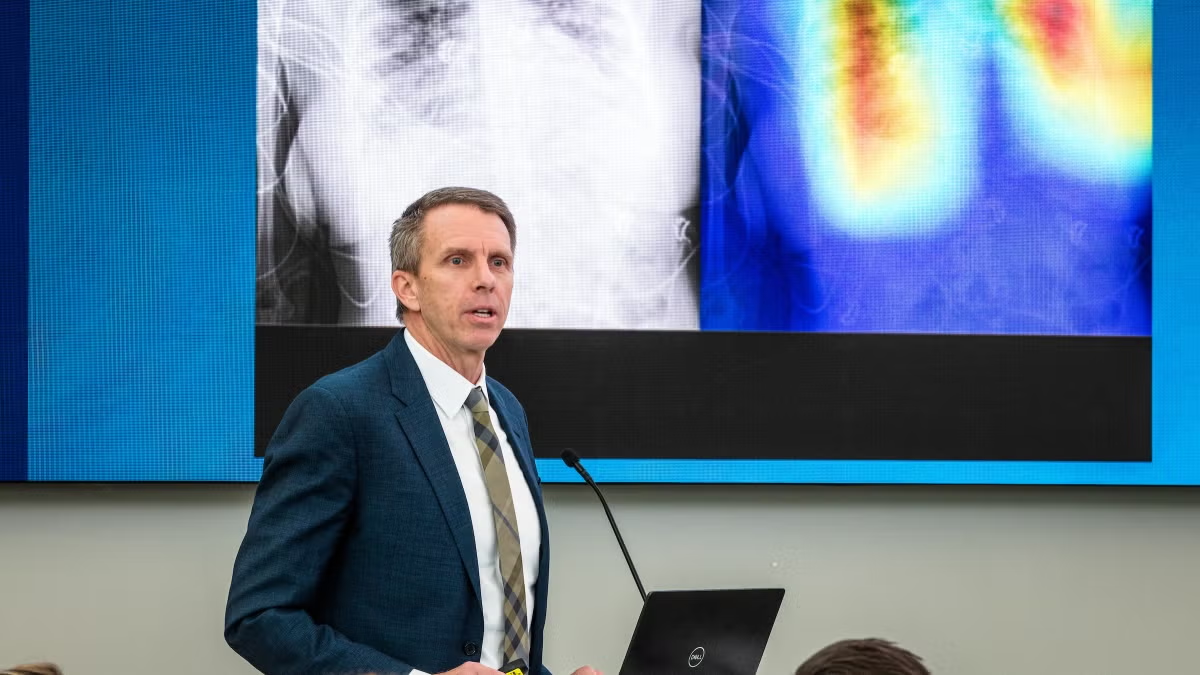Now Reading: Human-Centered Technology in Focus at ASU Digital Health Summit
-
01
Human-Centered Technology in Focus at ASU Digital Health Summit
Human-Centered Technology in Focus at ASU Digital Health Summit

Digital Health Booming, But People Matter Most
Digital health is changing fast. Technology is racing ahead. Think smartwatches and virtual doctor visits. Artificial intelligence and data management are also part of it. But experts at a recent ASU summit say tech alone isn’t enough. People must remain at the heart of these changes.
Tech Needs a Human Touch
Michael Yudell from ASU emphasized the key role of people. Just focusing on gadgets won’t get us far, he said. He believes we need experts in human behavior. These specialists can understand how tech impacts different groups. They can help ensure tech helps everyone, especially those most at risk.
Summit Highlights Tech for All
This important discussion happened at the first ASU Digital Health Summit. It took place in downtown Phoenix. The event covered many interesting topics. For example, they explored how technology aids people with dementia. Also, they discussed “digital twins” for better health care. Making tech user-friendly for everyone was a major focus. ASU’s College of Health Solutions, the ASU Roybal Center, and Google Government sponsored the summit.
Seniors Embrace Health Tech
Lifestyle changes improve health. Diet and exercise are great for preventing illness. They also help us live longer. Matthew Buman, an ASU professor, explained this. But, these changes can be hard. They often need many doctor visits. Digital health technology can make it easier. Actually, older adults are eager to use tech for their health.
Smartphones Cut Screen Time
Professor Fang Yu joined Buman for a talk. They shared studies on how tech helps seniors and their doctors. One study aimed to reduce older adults’ screen time. Researchers used smartphone tricks. They sent text reminders and gave rewards. They even briefly locked screens. These methods cut screen time by one hour daily!
‘Digital Twins’ for Personalized Care
Diane Cook from Washington State University spoke about “digital twins.” Imagine a virtual version of yourself. This twin uses your data to predict your health responses, she explained. For instance, think about someone with diabetes and memory issues. A digital twin can track their habits. This helps see how behavior links to health changes. It can also identify actions to improve health.
Data Challenges and Benefits
Digital twins use lots of data. This includes genetics, social life, and surroundings. Cook described data collection challenges. Apple watches and home sensors track activity. But, things like money management are harder to measure. Also, people might remove devices or live with others, creating complex data. Yet, digital twins offer hope. For example, they can remind patients to take medicine at dinner time.
Making Tech Fair for Everyone
Beyond the keynotes, the summit had smaller group discussions. One panel focused on fair access to digital health. Maissa Khatib, a researcher, shared insights. Her team created a model for community trust. Getting the community involved early is key, she said. This helps identify problems and gives people ownership. Access to basic tech like laptops and internet is essential for everyone, she noted.
Respecting Community Data
Krystal Tsosie, another professor, discussed Indigenous data rights. Native communities often distrust sharing data. They worry about misuse of their genetic information. She highlighted “group consent.” This is important for tribal communities. It differs from individual consent. Current data systems don’t always fit this group approach. Tsosie cautioned that open data models may mainly benefit corporations.
Tech Isn’t a Magic Solution
Beza Merid, a professor and lab director, gave a reminder. Tech isn’t a fix-all solution. It’s created by people who might have biases. Designs can also have limitations. He used blood pressure monitors as an example. They’ve improved, becoming smaller and easier to use. Now, facial recognition could measure blood flow. However, facial recognition can be inaccurate and misused, especially in some communities.
Health Care Should Embrace Innovation
Craig Norquist, a doctor and tech expert, urged faster adoption of digital health in medicine. He pointed out that athlete’s watches have advanced health tracking. Yet, medicine is slower to adopt these tools. Doctors are cautious, which is understandable, he said. Patient safety is the top priority. However, he thinks the medical field could be more open to new tech.
Patient Innovation Drives Change
Norquist mentioned continuous glucose monitors for diabetes. These devices were a huge step forward. Patients no longer needed constant finger pricks. Combining them with insulin pumps created an “artificial pancreas.” Initially, regulators hesitated. But, patients themselves linked these devices. They shared their methods widely, driving innovation forward.
Pandemic Pushed Digital Health Ahead
The pandemic sped up digital health use, especially telemedicine, Norquist noted. Researchers also used AI to analyze chest X-rays for COVID detection. This happened even before COVID tests were widely available. The HonorHealth and ASU partnership aims to bring more innovation to health care. Norquist’s message was clear: keep improving, make tech user-friendly and effective.























